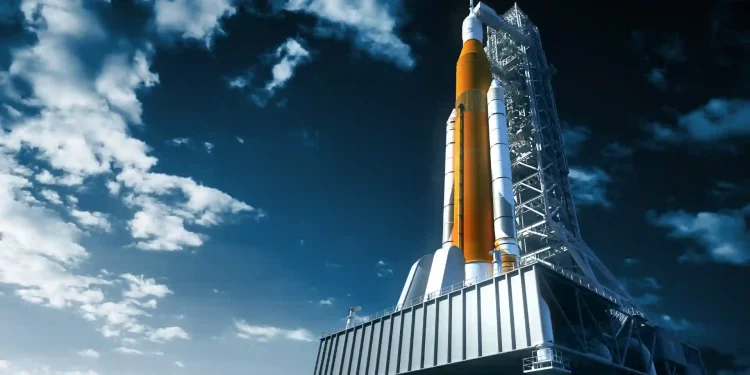Artemis 1, NASA’s Space Launch System (SLS) rocket with the Orion spacecraft aboard arrived atop a mobile launcher at Launch Pad 39B, Wednesday, Aug. 17, 2022, after being rolled out to the launch pad at NASA’s Kennedy Space Centre in Florida. Artemis 1 mission is NASA’s foremost integrated test of the agency’s deep space exploration systems, the Orion spacecraft, SLS rocket, and supporting ground systems.
The launch of the uncrewed flight test is scheduled for no earlier than August 29 at 8.33am (1233 GMT). If it must be postponed due to harsh weather, the backup dates would be September 2 and 5, 2022.
NASA has received an extension from the Space Launch Delta 45 on the validation of the FTS (flight termination system) testing from 20 to 25 days before the system would need to be retested. The waiver would be valid during the Artemis 1 launch attempts. For safety purposes, all rockets are mandated to have a system that the Space Launch Delta 45 be able to utilize to terminate the flight if necessary.
America’s quest to return humans to the Moon for the first time since the last Apollo mission in 1972, this would be the first voyage of the Artemis mission.
Artemis is the initial stage in the subsequent era of human exploration. NASA would create a sustainable presence on the Moon to prepare for missions to Mars jointly with commercial and international partners.
The Artemis 1 mission, an uncrewed test flight, would feature the first blast off the Space Launch System rocket, which would be the most effective mission in the biosphere.
It would propel the Orion crew capsule into orbit around the moon, before returning to Earth the spacecraft would remain in space for 42 days.
Astronauts would travel aboard Orion for the same trip, starting in 2024, and the following year, Americans would once again set foot on the Moon. The SLS rocket, in progression for more than a decade, is ninety-eight meters (322 feet) tall.
NASA’s Space Launch System (SLS) is a heavy lift launch vehicle capable of powering the Orion spacecraft and cargo beyond low Earth orbit. The Orion spacecraft is the safest spacecraft designed by NASA, Orion would carry humans to the Moon and beyond.
NASA administrator Bill Nelson said earlier this month said that, to all the humankind who gaze up at the Moon, dreaming of the day returns to the lunar surface.
NASA says Artemis mission aims to land the first woman and the first person of colour on the moon
The Orion capsule would hover to the Moon and 64,000 kilometres (40,000 miles) beyond it which is further than any previous crewed spacecraft.
The Orion’s thermal shield will have to withstand a temperature that is half that of the surface of the sun, on its way back through Earth’s atmosphere, travelling at 40,000 km per hour (25,000 mph).
After the 42-day trip, the Orion capsule is intended to wade down in the Pacific and be picked up by a US Navy vessel.
In the year 2024, an Artemis 2 mission is slated to take astronauts up to orbit the moon but without landing on it. That tribute is held in reserve for Artemis 3, a mission scheduled for 2025.
While the Apollo program featured only white male astronauts, NASA says the Artemis mission aims to land the first woman and the first person of colour on the moon.


















